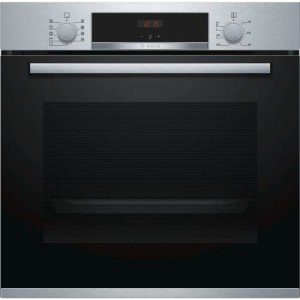25 Shocking Facts About Oven Built In

The Rise of Built-In Ovens: A Seamless Approach to Modern Cooking
In contemporary kitchens, where design aesthetics blend effortlessly with functionality, one home appliance stands apart as a real video game changer: the built-in oven. As property owners and chefs alike continue to seek innovative services that enhance their cooking experience, built-in ovens have ended up being significantly popular. This article checks out the advantages, factors to consider, and trends surrounding built-in ovens, highlighting why they are an essential function in contemporary cooking areas.
What is a Built-In Oven?
A built-in oven is a cooking area device developed to be integrated into the cabinetry of a cooking area instead of standing alone. Unlike traditional freestanding ovens, which can be moved and positioned anywhere, built-in ovens been available in numerous styles and sizes to fit particularly within designated areas. Available in single or double configurations, these ovens offer a streamlined appearance that complements contemporary cooking area styles.
Advantages of Built-In Ovens
1. Space-Saving Design
One of the most attractive advantages of built-in ovens is their space-saving style. By integrating breaking news into kitchen cabinetry, you can free up important counter and floor space. This is particularly helpful in smaller sized cooking areas, where maximizing space is essential. Built-in ovens can be set up at eye level, making them more accessible and minimizing the need to bend down.

2. Visual Appeal
Built-in ovens add to a streamlined and cohesive kitchen area style. Offered in various surfaces-- such as stainless-steel, black, white, and customized kitchen cabinetry-- they can mix flawlessly into the general decor. This visual appeal improves the kitchen area's visual consistency and elevates the area, producing a modern and advanced atmosphere.
3. Boosted Functionality
Lots of built-in ovens come geared up with advanced cooking technologies, such as convection cooking, steam ovens, and smart functions. These enhancements allow for versatile cooking choices, making it easier to accomplish professional-level outcomes in the house. Smart built-in ovens can even link to Wi-Fi, enabling users to manage the oven from another location, receive notifications, and gain access to a variety of cooking programs and dishes.
4. Enhanced Ventilation
Because built-in ovens can be integrated with kitchen area hoods and ventilation systems, they can assist preserve much better air quality and decrease cooking odors. This is specifically considerable for those who like to cook with aromatic spices and components, as an efficient ventilation system can keep the cooking area comfortable and welcoming.
5. Customization Options
Built-in ovens offer a wide range of customization alternatives to fit private cooking styles and requirements. From professional-grade home appliances with several cooking modes to compact styles for smaller sized kitchen areas, homeowners can choose the oven that fits their particular requirements. Numerous makers also use customizable front panels, enabling you to match the oven's appearance to your cabinets for a truly merged look.
Considerations When Choosing a Built-In Oven
While built-in ovens have lots of advantages, there are necessary factors to consider to keep in mind before buying:
1. Cost
Built-in ovens typically come with a higher price tag than their freestanding counterparts due to their design and installation requirements. It's essential to factor in both the expense of the oven and any additional expenses related to cabinetry adjustments or installation.
2. Installation Requirements
Installing a built-in oven frequently needs professional support, especially if you require to modify existing kitchen cabinetry. Make sure that you consider any costs connected with installation, consisting of labor and potential cabinetry modifications.
3. Size and Dimensions
Before buying a built-in oven, determine the designated space properly to ensure an appropriate fit. Built-in ovens been available in numerous sizes and setups, so picking one that aligns with your needs and cooking area design is vital.
4. Way of life and Usage
Consider your cooking habits and needs when choosing a built-in oven. If you frequently host large gatherings, a double oven might be more beneficial. On the other hand, if you have a compact kitchen, a single-wall oven might suffice.
Patterns in Built-In Ovens
The kitchen appliance market is continually progressing, and built-in ovens are not exempt from emerging trends. Some existing trends consist of:
Smart Technology Integration: With the increase of smart home technology, built-in ovens now frequently include connectivity alternatives. This permits users to keep track of cooking progress and change settings via mobile apps.
Energy Efficiency: As sustainability ends up being a concern, numerous makers are purchasing energy-efficient built-in ovens that reduce energy intake while preserving performance.
Multi-functional Designs: Built-in ovens now provide features such as air frying, sluggish cooking, and steaming, supplying flexibility that satisfies a wide range of cooking approaches.
Conclusion
Built-in ovens certainly represent a perfect blend of style, function, and convenience in today's kitchens. As more homeowners choose this modern solution, the focus shifts to producing a cooking area that is as aesthetically pleasing as it is practical. Whether you are constructing a brand-new home or renovating your kitchen area, thinking about a built-in oven could raise your culinary experience and transform your kitchen area into a trendy and functional haven. With a selection of options readily available and continuous innovations in technology, built-in ovens remain a standout option for both newbie cooks and cooking lovers alike.
